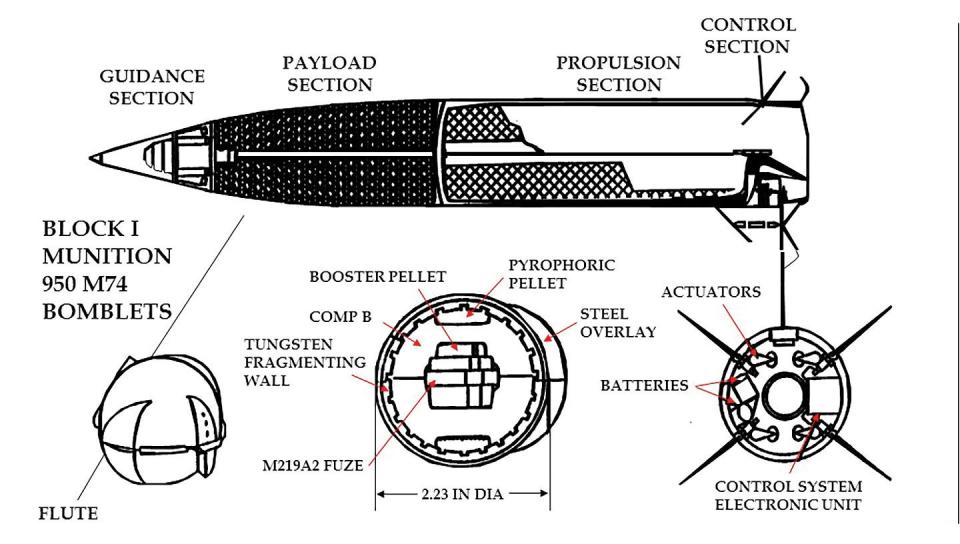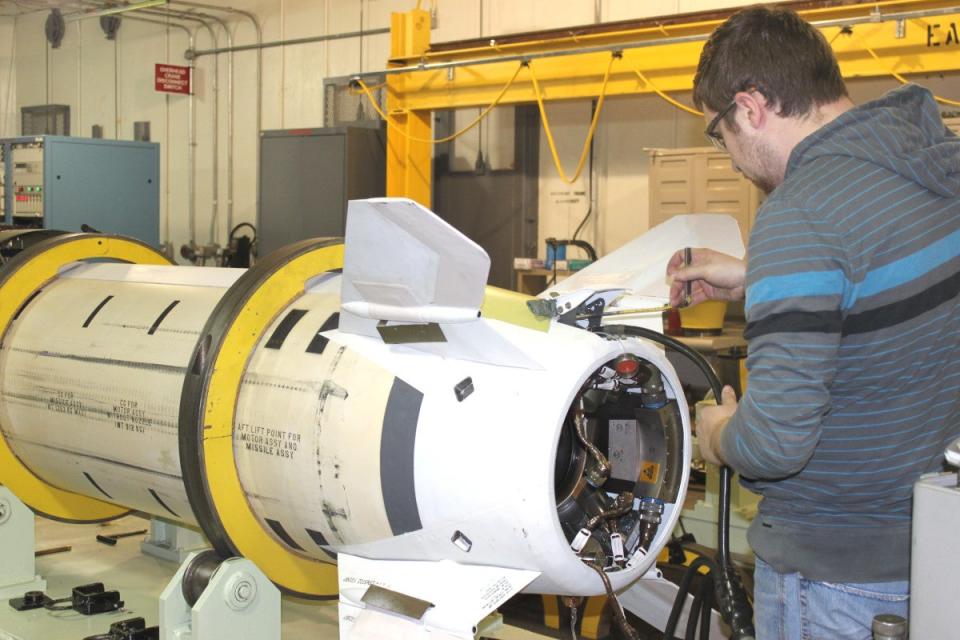Ukraine Getting ATACMS Cluster Variant Would Be A Big Problem For Russia

In the course of the discussions about what Army Tactical Missile System (ATACMS) ballistic missiles could offer Ukraine, much of the focus has been on variants of these weapons equipped with unitary (single high-explosive) warheads. However, versions loaded with cluster munitions could introduce a whole other set of dire complications to Russian forces.
ATACMS, a late Cold War-era American short-range ballistic missile, comes in two primary flavors. The first two variants of this missile were cluster munition dispensing models loaded with 950 and 275-300 submunitions and with maximum ranges of 165 kilometers (102 miles) and 300 kilometers (186 miles), respectively. The two missiles are known variously as the MGM-140A and B, the Block I and IA, and the M39 and M39A1.

Later ATACMS versions that entered operational service are fitted with unitary warheads. These missiles are referred to as MGM-140Es and MGM-168As, Block IVAs, and M48s and M57s, depending on differences in fuzing and other internal components. However, they all have the same 500-pound-class blast fragmentation warhead, the same one used in the Harpoon anti-ship missile. However, one big difference is that the Harpoon slams into its target at subsonic speeds. ATACMS does the same at speeds that approach hypersonic, which converts massive kinetic energy onto the target and allows it to successfully destroy fortified targets. These ATACMS all feature a maximum range of 300 kilometers (186 miles).

All types of ATACMS can be fired from tracked M270 Multiple-Launch Rocket System (MLRS) and wheeled M142 High Mobility Artillery Rocket System (HIMARS) launchers. Both of these are in service with the Ukrainian Army.
While sending Ukraine cluster munitions may have seemed like an unlikely possibility at the start of Russia's all-out invasion well over a year and a half ago, the precedent has already been set by the delivery of many thousands of cluster artillery shells from U.S. stocks. The first of these munitions arrived in July after a prolonged period of internal debate within the Biden Administration. The shells were seen as a way to drastically increase Ukraine's access to 155mm artillery ammunition of any kind in order to support its counteroffensive and to bring new effects to the battlefield in an attempt to break Russia's fortified lines. So the debate over giving Ukraine cluster munitions has already been settled.
Some of the U.S. inventory of M39/A1 cluster munition variants of ATACMS has been converted to versions with unitary warheads. Changes in precision-guided weapons capabilities and capacity, the controversy over cluster munitions, along with changes in combined arms tactics, spurred the focus on unitary warhead models. But for Ukraine, being able to deliver area effects out to ranges of nearly 200 miles, and do so with a very hard to defend against delivery system, represents a major lift in the pain they can inflict on Russia's warfighting capabilities.

For Ukraine, which has intensely sought ATACMS over many months, the ability to deliver a 500-pound warhead with incredible force over long distances would spell big trouble for critical Ruissan logistics nodes and related infrastructure like bridges, as well as fortified command and control centers, all far behind the front lines. Yet the cluster variant puts vehicle pools, ammo dumps, and especially air defense systems and parked aircraft, under great threat.
A single M39A1 ATACMS, which features GPS and inertial navigation, carries some 300 M74 submunitions. The missile executes a stabilized spin during its terminal attack, with the payload dispenser covers blowing off and centrifugal force sending the bomblets flying in a large rounded pattern. The size of the area ATACMS effects and the density of the bomblet distribution can be altered via setting the release height.
https://www.youtube.com/watch?v=Ipr_hPAcR_Q
The baseball-like M74 is a nasty weapon. It features a spherical high-explosive blast fragmentation charge. Their asymmetrical design also imparts spin during release. Once it hits 2,400 revolutions per minute, its fuze is armed. The hundreds of M74s impacting near-simultaneously create a cloud of shrapnel and explosive blasts that blanket the ground. The weapon is considered highly effective against personnel and soft targets.


Basically, a couple of ATACMS could be fired at a Russian airbase in Crimea and other occupied areas of Ukraine and destroy all the aircraft sitting on their main aprons. None of these aircraft are parked in fortified hangars or under any covering at all. Anything that is explosive or highly flammable would detonate creating major secondary effects. This is a far cry from relying on long-range drones or remote-controlled types operated from teams close by to strike individual planes, let alone sabotage teams that have to physically place explosives on their targets. The loss in airpower from a single barrage could be unprecedented.
Air defenses, especially Russia's long-range S-300 and S-400 types that are a finite resource in great demand, would be at incredible risk of being totally destroyed by cluster munition-packing ATACMS. Instead of attacking the radar or command vehicle with a missile or drone equipped with a unitary warhead, a single ATACMS would blanket the area where the SAM system is emplaced with bomblets. The soft skin of the system's vehicles and delicate sensor components would be showered with shrapnel. Missiles would be cooked off. It would not just be a 'mission kill' or the partial loss of the battery, it would be a total or near-total loss. And while these SAM systems have some anti-ballistic missile capabilities, ATACMS is a hard target to take down operationally. If used as part of a layered attack, it would be even harder.
This is especially relevant to current Ukrainian operations against Crimea, in which Kyiv is focusing on poking holes in Russia's air defense umbrella over and emanating out from the peninsula in order to facilitate cruise missile and drone attacks on other targets. At least two S-400 SAM systems have been destroyed so far as part of these operations, allowing for successful attacks deeper into the heart of Russian interests in Crimea, such as the successful Storm Shadow strike on the Black Sea Fleet's headquarters and on a submarine and amphibious assault ship in drydock.
https://twitter.com/DI_Ukraine/status/1694289486073524483 https://twitter.com/CITeam_en/status/1703736274484334701?s=20
Troop encampments and ammunition dumps would also be at extreme risk of cluster munition-equipped ATACMS strikes. Even the Black Sea Fleet itself could suffer dearly at the hands of a cluster munition-equipped ATACMS.
Russia parks its ships close together, oftentimes using the 'Mediterranean' style of mooring. While the missile could not sink multiple ships directly, its cluster munitions would cause damage to the vessels' sensors and other components, causing numerous 'mission kills' that could take months to fix. The possibility of fire and secondaries is also a consideration that could indeed result in a total hull loss.
Ukraine's spymaster, General Kyrylo Budanov, told The War Zone how important ATACMS could be for exactly these reasons last week in an exclusive interview in Washington, DC, stating:
"The Russians just place command posts and other things beyond those distances so we don't have anything to reach them there. And the situation is the same with Russian aviation at the airfields. Fighting Russian aviation using air defense systems is very costly and ineffective. Aviation should be taken out at the air bases."

All this being said, significant questions do still remain about when Ukraine might receive any ATACMS and what variants it might get.
At the most basic level, U.S. President Joe Biden and his administration do appear to be steadily warming to the idea of transferring some number of ATACMS to the Ukrainian armed forces. This comes after months of pushback, with U.S. officials regularly citing the relatively limited number of these strategically important weapons in American stocks, as well as fears about provoking a new level of escalation from the Russian government.
Last week, Douglas Bush, the Assistant Secretary of the Army for Acquisition, Logistics, and Technology, said the inventory issue was set to be eased significantly by the acquisition of new Precision Strike Missiles (PrSM), which are set to replace ATACMS. PrSM's manufacturer, Lockheed Martin, has told The War Zone it expects to begin deliveries of production examples before the end of this year.

Speaking at a media roundtable that The War Zone and other outlets attended on September 19, Bush also took the opportunity to push back on previous reports that the U.S. military had somehow undercounted its ATACMS inventory. "Of course, we know exactly how many we have [and] exactly where they are."
Just yesterday, William LaPlante, Under Secretary of Defense for Acquisition and Sustainment, said PrSM deliveries had begun. The War Zone has reached out to LaPlante's office and Lockheed Martin to confirm this and for more information.
https://twitter.com/ColbyBadhwar/status/1706713674751132015?s=20
Whether it is less problematic from a strategic readiness perspective or not to send ATACMS to Ukraine, there is still the question of how many and what variants might be available for transfer, as well as how fast that might occur. ATACMS is still in production, but the U.S. military stopped buying new examples years ago.
Lockheed Martin, which makes the missiles and launchers, is understood to have produced about 4,000 ATACMS of all variants over the past two decades or so. This includes about 600 examples that U.S. forces fired in combat during the Persian Gulf War and the Iraq War and others that were sold to foreign countries, according to previous reports.
ATACMS production, of course, goes back to the 1980s. As already noted, the U.S. Army has been in the process of converting older M39/A1 missiles loaded with submunitions into newer variants with unitary warheads. This process began, in part, because many of these early block missiles were reaching the end of their shelf lives and needed to be refurbished in order to be safe and effective to use at all.

How many cluster munition-loaded M39/A1s might remain in U.S. inventory now is unknown and The War Zone has reached out to the Army for more information. Examples of the cluster munition variants of ATACMS have also been exported in the past to Bahrain, Greece, South Korea, and Turkey, where their status is equally unclear.
The Washington Post did report last week that current discussions about sending ATACMS to Ukraine were centered on the possibility of sending versions loaded with cluster munitions specifically. That story cited “several people familiar with the ongoing deliberations.”
In addition, earlier this year, multiple Republican members of Congress wrote an open letter to the Biden administration imploring it to approve sending cluster munition artillery shells to Ukraine and noted explicitly that this could help "unlock multiple new systems that have a [cluster munitions] variant, including ... ATACMS." Biden ultimately did decide to allow the transfer of 155mm artillery shells filled with submunitions to Ukraine, as already mentioned.
All of this points to the continued availability of at least some M39/A1 ATACMS missiles that could be sent to Ukraine, although we are still working to confirm they still exist in the inventory. Even if only in limited numbers, with their focus being to take out very high value target sets, the missiles could have an impact on the course of the conflict. And, of course, there is a whole separate argument for why the unitary warhead models are in great demand, as well. Dropping the Kerch Bridge if often cited as a primary example, but that is just one of many potential applications. Yet the cluster munition variants would have a very special role to play, one that would result in very unique effects on some of Russia's highest-value military targets in occupied areas of Ukraine.
Howard Altman contributed to this story.
Contact the editor: Tyler@thedrive.com

